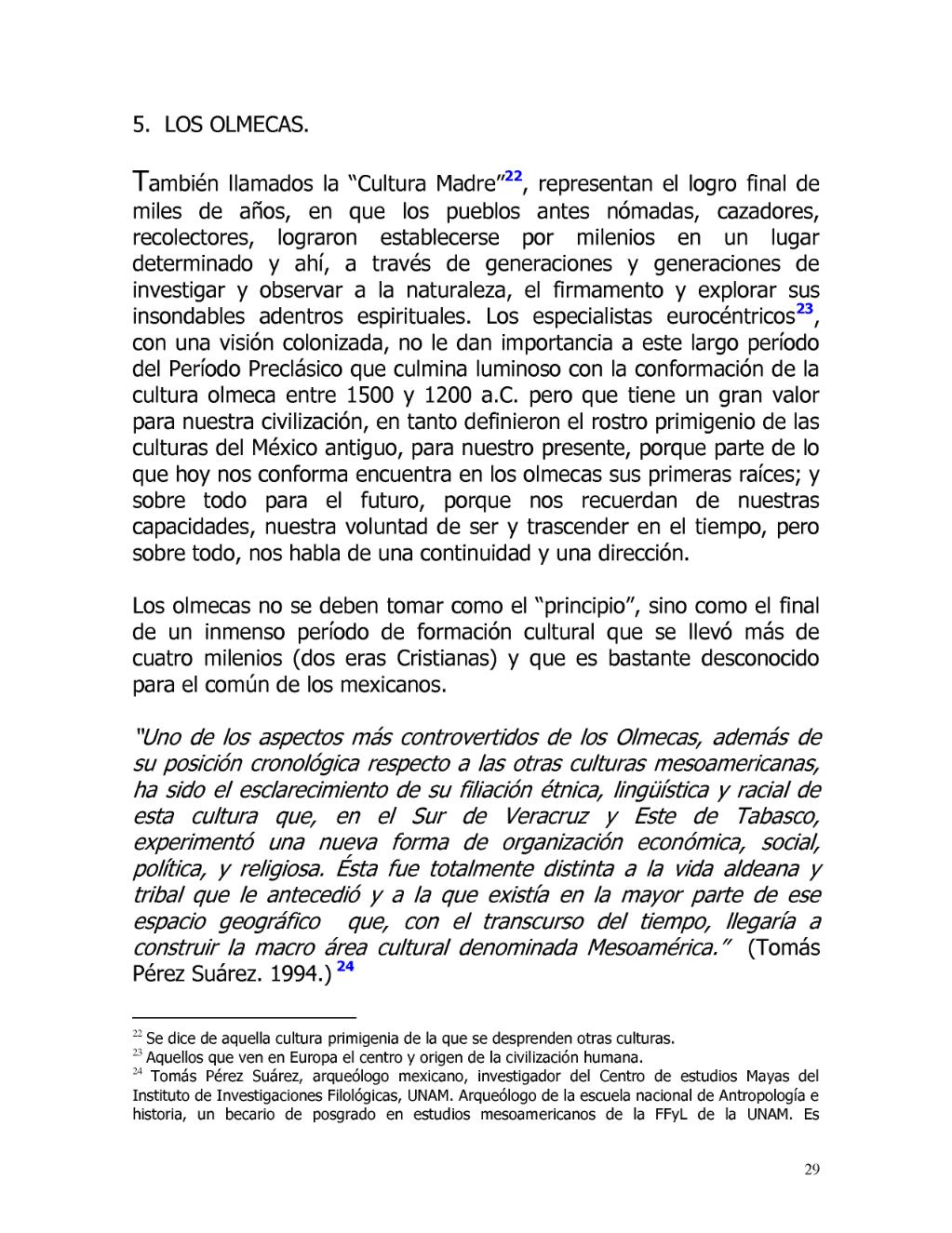5. THE OLMECS.
Also called the "Mother Culture"[1], represent the final achievement of thousands of years, during which previously nomad peoples, hunters—gatherers, settled themselves for thousands of years in a given place and, there, generation after generation, investigated and observed nature, the skies, and explored their inner spiritual selves. Eurocentric scholars[2] , with a colonized vision, do not consider important this long preclassical period that successfully culminates with the formation of the Olmec culture between 1500 and 1200 BCE, and is of great value to our civilization, as it helped define the early cultures of ancient Mexico, for our present; because part of what we are today, is rooted in the early Olmecs and specially for our future, because they remind us of our capabilities, our desire to be and transcend time, but above all, talks to us about continuity and direction.
The Olmecs should not be considered to be the "beginning", but rather, the end of a huge period of cultural formation that took more than four millennia (two Christian eras) and is quite unknown to ordinary Mexicans.
"One of the most controversial aspects about the Olmecs, in addition to their chronological position in relation to other Mesoamerican cultures, has been the elucidation of their ethnic, linguistic and racial affiliation of this culture that, in the south of Veracruz and east of Tabasco, experimented with new forms of social, economic, political, and religious organization. This was completely different from the village and tribal life that preceded them, and which existed in most of the geographical space that, with the passage of time, would build the macro cultural area called Mesoamerica." (Tomás Pérez Suárez. 1994).[3]
____________________
- ↑ A Mother Culture is a term for an early people and their culture, with great and widespread influence on later cultures and people. Though the original culture may fade, the mother culture's influence grows for ages in the future. Later civilizations either learn and build upon their old ways, or can learn them through peaceful or military assimilation. This term can be found in the novel Ishmael by Daniel Quinn. Mother Cultures in history include that of Kemet in the Mediterranean, and the Olmec in Mesoamerica.
- ↑ Those who see Europe as the center and origin of human civilization.
- ↑ Tomás Pérez Suárez, Mexican archaeologist, researcher at the Center for Mayan Studies of the Institute of Philological Research, UNAM. Archaeologist for the National School of Anthropology and History,with an advanced degree in Mesoamerican studies from the Faculty of Philosophy and Letters of UNAM. He is a researcher at the Center for Mayan studies and his areas of research are: the sites of the early Preclassic in the coast of Chiapas, the history of Olmec archaeology and Mayan epigraphy. He is a professor at the Faculty of Philosophy and Letters and the National School of Anthropology and History of the National Conservatory school, of restoration and museum technology.
This page was originally published in Spanish, and is translated by Wikisource editors. It does not use the proofread page system traditionally; it is used to verify translation. Proofreading and validation must be done by editors who are fluent in both the original and the translated language. Follow the interwiki link under In other languages to view this page in Spanish. |
